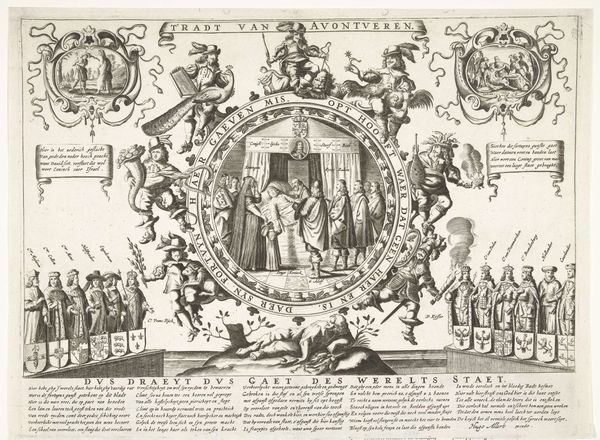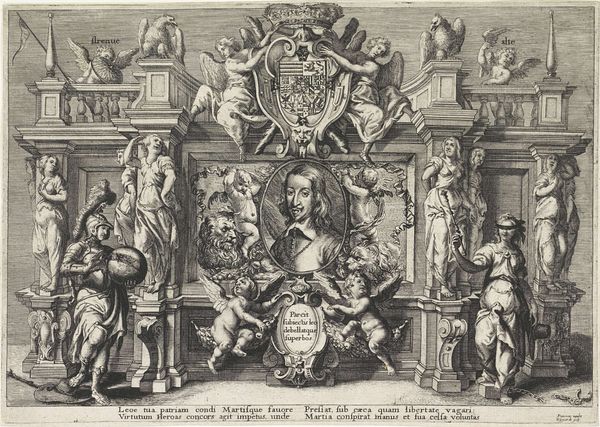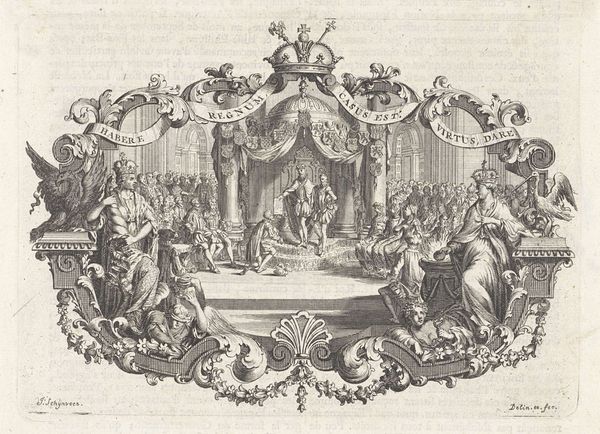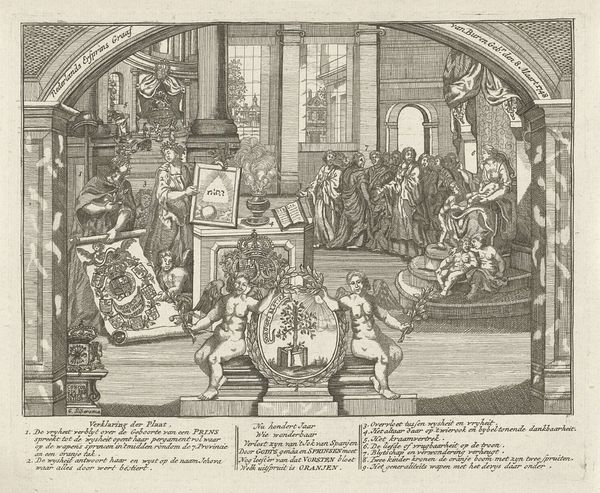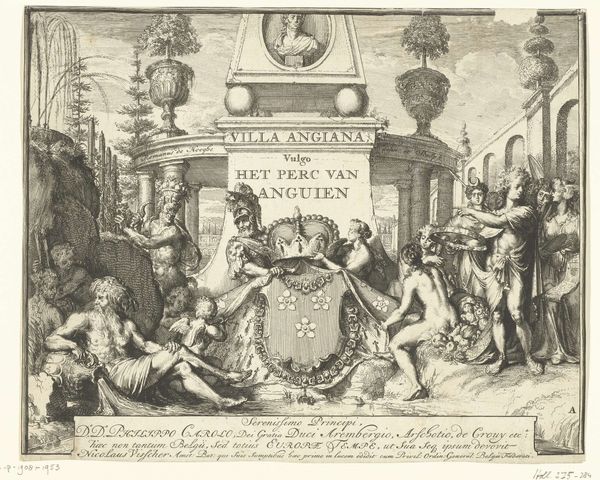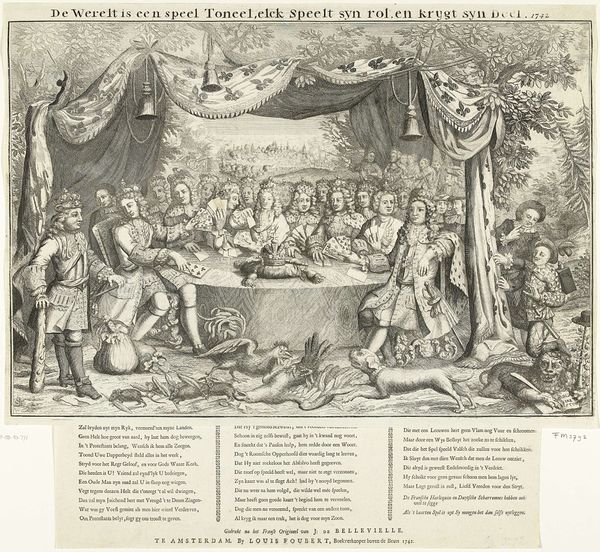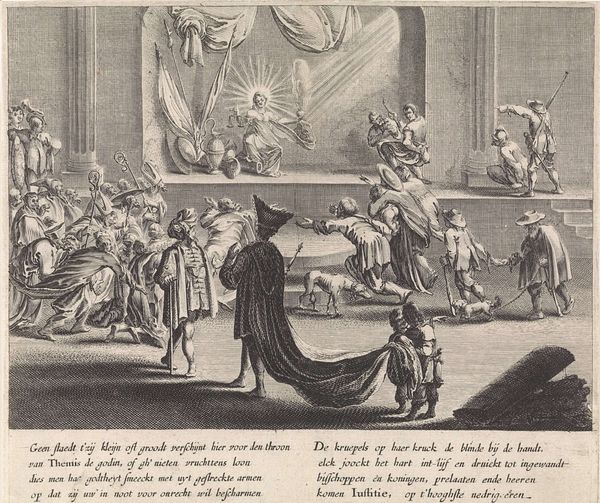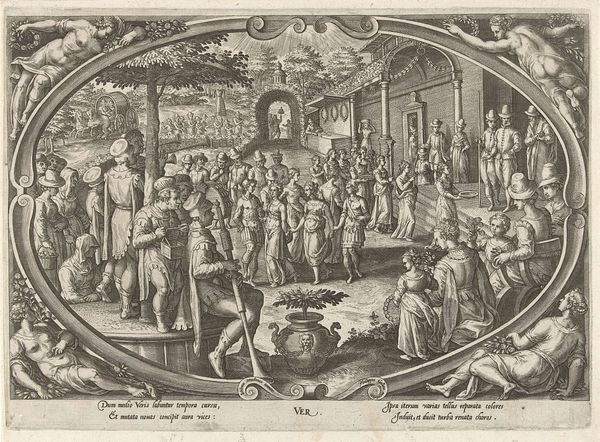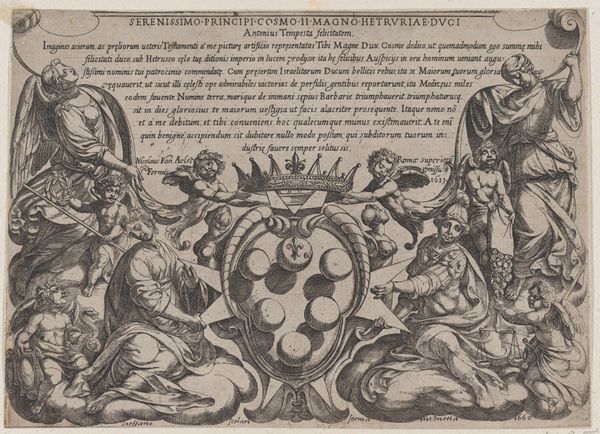
Dimensions: height 217 mm, width 295 mm
Copyright: Rijks Museum: Open Domain
Curator: This is Jacques de Gheyn the Elder’s "The Expulsion of Tyranny," an engraving from 1577. Editor: It’s incredibly detailed; the sheer volume of figures creates a swirling sense of…exuberance, perhaps? A chaotic dance away from darkness. Curator: That chaotic energy stems from the Baroque style and the dense linework. De Gheyn uses line to define forms, creating a textured surface. It also communicates a lot about its cultural milieu: consider the themes present in it such as history-painting, figuration, and allegory. The scene bursts with symbolism relating to the revolt against Spanish rule in the Netherlands. Editor: Precisely. The print showcases a dynamic narrative: Tyranny, driven from its throne, while virtues like Justice and Peace flourish. Note the inscriptions that complement the visual narrative, written in Latin, French, and Dutch, probably reflecting the linguistic landscape of the region at the time. Also, there is a very interesting visual break happening with a heavenly scene juxtaposed against more earthly figures in what appear to be dynamic revolt. It almost reads like a before and after image combined. Curator: Indeed. The central scene depicting Justice and Prudence joining hands emphasizes the restoration of order and wise governance. Then on the right, the figures represent civic virtues. These are not merely aesthetic choices, but carefully constructed representations of moral and political ideals. Even the architecture contributes, framing these allegorical representations. Editor: Viewing it through a modern lens, this print echoes calls for liberation we hear even now. The fight against tyranny and the aspiration for peace remain incredibly potent, timeless desires that people all over the world hold dear. Curator: Absolutely. De Gheyn offers us not only a visual document of a historical moment but a timeless allegory of resistance and hope. Editor: It leaves one to ponder the ongoing cycle of oppression and liberation, and the enduring power of art to mirror, critique, and inspire change.
Comments
No comments
Be the first to comment and join the conversation on the ultimate creative platform.
